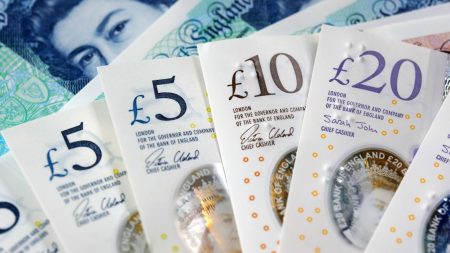If shedding debt is your top priority for the new year, you’re not alone. Millions rely on credit to navigate holiday expenses, often leading to a financial hangover in January. Fortunately, reclaiming control over your finances is achievable with a structured approach. Here are eight actionable steps to help you pave the way towards a debt-free future:
Firstly, confront your financial reality head-on. Avoid the temptation to ignore mounting bills and statements. Gather all your financial documents, meticulously list each debt, noting the outstanding balance and due date. This comprehensive overview will serve as your roadmap to financial recovery, providing a clear picture of what you’re up against. Creating a detailed budget is the next crucial step. Track your income and every expenditure, identifying areas where you can trim unnecessary spending. Scrutinize recurring expenses like subscriptions and evaluate cost-saving alternatives, such as switching to more affordable grocery stores. This budgeting exercise not only illuminates spending patterns but also helps allocate funds towards future expenses, preventing a repeat cycle of debt accumulation.
Thirdly, escape the minimum payment trap. While seemingly convenient, minimum payments barely chip away at the principal debt, prolonging the repayment period and accumulating substantial interest charges. Even a small increase beyond the minimum payment can significantly accelerate debt reduction and save you a substantial amount of money in the long run. Explore utilizing 0% balance transfer credit cards. If you have a manageable level of credit card debt and a reasonable credit score, transferring your balance to a 0% interest card can provide a valuable window of opportunity to pay down debt without accruing interest. Ensure you commit to paying more than the minimum and clear the balance before the introductory period expires to avoid high interest rates kicking in.
Next, don’t hesitate to communicate with your bank and creditors. They are equipped to assist customers facing financial difficulties and may offer solutions like adjusted repayment plans or temporary payment breaks. Leverage resources like template letters provided by debt advice organizations to effectively communicate your situation. While debt consolidation loans can streamline multiple debts into a single payment, proceed with caution. These loans involve taking on additional debt and can impact your credit score. Thoroughly evaluate the terms and conditions and avoid companies charging upfront fees for debt consolidation services.
Remember, seeking debt advice should always be free. Reputable charities offer comprehensive support and guidance without any cost. Avoid predatory companies that charge fees for their services. Finally, connect with online communities and resources dedicated to debt management. Social media platforms and forums offer valuable peer support and practical tips for saving money and navigating the debt repayment journey. Learn from others’ experiences and find encouragement in shared struggles.
Two common approaches to debt repayment are the avalanche and snowball methods. The avalanche method prioritizes paying off high-interest debts first, minimizing overall interest paid. While financially efficient, this approach can be mentally challenging due to the focus on larger debts. The snowball method, on the other hand, targets the smallest debt first, regardless of interest rate, providing a sense of accomplishment and motivation as debts are cleared one by one. While potentially leading to higher overall interest paid, the snowball method can be more sustainable for some due to its psychological benefits.
Real-life stories, like that of Jaspal Singh Bahara, demonstrate the power of seeking help and following a structured debt repayment plan. Jaspal, burdened by significant credit card debt, found relief and support through a debt charity, which helped him create a budget, negotiate with creditors, and eventually achieve debt freedom. His story highlights the importance of communication, seeking expert guidance, and the transformative impact of regaining financial control. Remember, you are not alone in this journey.
By implementing these steps, you can take decisive action towards a debt-free future. Confronting your financial situation, creating a budget, exploring repayment options, and seeking support are crucial steps in achieving financial freedom. Remember to utilize available resources, connect with supportive communities, and celebrate your progress along the way. The path to debt freedom may require dedication and perseverance, but the rewards of financial stability and peace of mind are well worth the effort. Start your journey to financial wellness today.











